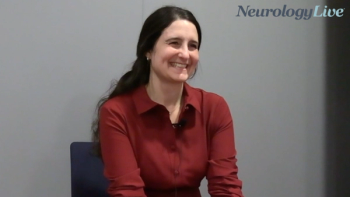
Cladribine More Effective Than S1P Receptor Modulators in Treating Relapsing-Remitting MS, Study Shows
Key Takeaways
- Cladribine outperformed S1Ps in reducing disability progression in treatment-naive RRMS patients over 25 months.
- The study involved 950 participants, with cladribine showing a lower risk of disability worsening compared to S1Ps.
Cladribine shows superior efficacy over S1P modulators in reducing disability progression in treatment-naive relapsing-remitting MS patients.
In a comparative effectiveness research study published in JAMA, cladribine (Mavenclad; EMD Serono) outperformed sphingosine-1-phosphate receptor modulators (S1Ps) in reducing disability progression over a 25-month period in treatment-naive patients with relapsing-remitting multiple sclerosis (RRMS).1 Overall, the data suggest cladribine may provide greater short-term protection against disability progression than traditional S1P treatments.
The study included 475 pairs (n = 950; mean age, 34.7 [SD, 10.7] years; 686 female [72.2%]) of treatment-naive individuals from 108 different Italian MS centers. The primary outcome was no evidence of disease activity (NEDA-3) and its subcomponents while secondary analyses evaluated disability accrual subdivided into progression independent of relapse activity (PIRA) and relapse-associated worsening (RAW), plus variables associated with treatment response. Cox proportional hazards models, adjusted for visit and magnetic resonance imaging (MRI) frequency, were used to compare outcomes.
Senior author Carla Tortorella, MD, PhD, a neurologist in the Department of Medical Basic Sciences, Neurosciences, and Sense Organs at the University of Bari in Italy, and her colleagues observed similar outcomes between cladribine and S1Ps for the trial's primary and secondary endpoint. The only significant difference was in disability progression, as cladribine-treated patients experienced a lower risk of worsening compared with those on S1Ps (11.4% [n = 54] vs 14.7% [n = 70]; hazard ratio [HR], 0.64; 95% CI, 0.42–0.96; P = .03).
On comparative effectiveness analyses, cladribine outperformed other S1Ps in terms of NEDA-3 loss (194 patients [44.4% vs 219 patients [52.2%]), relapse rates (72 patients [15.2%] vs 76 patients [16.0%]), and MRI activity (137 patients [31.3%] vs 145 patients [34.8%]). The findings were confirmed in sensitivity analyses in patients younger than 40 years (n = 497; 247 pairs), those whose diagnoses were made according to the 2017 McDonald Criteria (n = 380; 190 pairs), and those with Expanded Disability Status Scale scores less than or equal to 3.0 (n = 794; 397 pairs).
Of the 950 total participants, treatment discontinuation occurred in 86 patients (18.1%) treated with cladribine and 102 patients (20.5%) taking S1PRMs (HR, 0.92; 95% CI, 0.67-1.15; P = .58). A total of 188 patients switched therapy, with 96 (51.1%) undergoing escalation to monoclonal antibodies and 44 (23.4%) deescalations to moderate-efficacy disease modifying therapies (DMT) with no between-group difference. Data on subsequent DMT were missing for 37 patients discontinuing S1PRMs.
Limitations of the study include its observational design, with nonrandomized treatment allocation and potential residual confounding despite matching. Additionally, selection bias may persist, as a larger proportion of eligible patients treated with S1PRM compared to cladribine (643 vs 320) were excluded during matching. Adherence and tolerability were not assessed but may have influenced outcomes while inconsistency in data collection could affect accuracy. No primary outcome was prespecified, and no adjustment for multiple comparisons was applied, so findings should be considered exploratory. Furthermore, grouping the 3 S1PRMs assumes similar effectiveness, although differential outcomes cannot be excluded.
Researchers note that although cladribine presented a lower risk of disability worsening compared to S1PRMs, “beyond 36 months, cladribine was associated with higher risk of relapse and loss of NEDA-3 status,” said study authors. “This novel finding requires cautious interpretation. NEDA-3, although widely adopted, is sensitive to minimal activity and does not reflect the severity or impact of events; it should, therefore, be complemented by other measures of therapeutic effectiveness.”1
Read More:
Cladribine’s efficacy over the long-term has been studied before, with findings from a single-center, real-world cohort of older patients with relapsing multiple sclerosis (MS) showed that cladribine was safe and well tolerated for a 2-year period after switching from a previous disease-modifying therapy (DMT).2
Presented at the
REFERENCES
1. Haggiag S, Prosperini L, Filippi M, et al. Comparative Effectiveness of Cladribine and S1P Receptor Modulators in Treatment-Naive Relapsing-Remitting MS. JAMA Netw Open. 2025;8(11):e2541025. doi:10.1001/jamanetworkopen.2025.41025
2. Negroski, D. Long-Term Follow-Up of Cladribine Tablets in a Real-World Aging Patient Population. Presented at: 2024 CMSC Annual Meeting; May 29-June 2; Nashville, TN. ABSTRACT CS08
Newsletter
Keep your finger on the pulse of neurology—subscribe to NeurologyLive for expert interviews, new data, and breakthrough treatment updates.



































